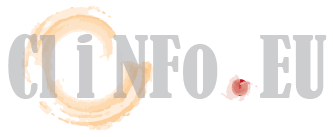Regulatory
Pitfalls in the clinical trial submission process according to CTR
On January 31, 2022, the long-awaited Clinical Trials Information System (CTIS) portal for submissions under the Clinical Trial Regulation (EU) No. 536/2014 (CTR) went online. Since then, many of us have already gained first experiences with the portal – especially since all new clinical trials now have to be submitted via this portal and the deadline for the transition to CTR of ongoing clinical trials is clearly approaching.
EU HTA Regulation: relevance, challenges and outlook
HTA stands for "Health Technology Assessment" and is used to systematically and transparently evaluate medical procedures and technologies from different perspectives. It aims to provide evidence-based information for physicians, health authorities, health insurers and patients.
EU CTR: How to write a good Lay Summary of clinical study results
Lay summaries are a display of clinical study results intended for study participants and the general public. The aim of a lay summary is not only to enhance understanding of complex medical information, but also to increase transparency in clinical research.
Simply explained: Drug approval procedures in Europe and the example of COVID-19 vaccines
Summary: There are three different marketing authorisation procedures in Europe: the Centralised Procedure (CP), the Decentralised Procedure (DCP) and the Mutual Recognition Procedure (MRP).
Digitalisierung im Gesundheitswesen, Teil 2
Der Mensch ist keine gefühllose Maschine, die beliebig zerlegt werden kann, um Fehler = Krankheiten und Reparaturen = Therapien einfach so zu erkennen und zu beheben. Die medizinische Forschung ist deshalb in den wichtigsten Disziplinen eine empirische Wissenschaft, also eine methodische Sammlung von Daten und daraus abgeleiteten Erkenntnissen.
Digitalisierung im Gesundheitswesen
Wir leben im Zeitalter der digitalen Revolution. Was heißt das eigentlich? Die Entwicklung der Menschheit hat 3 industrielle Revolutionen durchlaufen. Geprägt waren diese durch die unaufhaltsame disruptive Entwicklung und permanente Optimierung der Effizienz von Produktionsmaschinen






